Dyeing with avocado pits is a fascinating and eco-friendly way to add beautiful hues to fabrics and fibers. Avocado pits, often discarded as waste, contain natural pigments that can be extracted to create soft pink and peach tones.
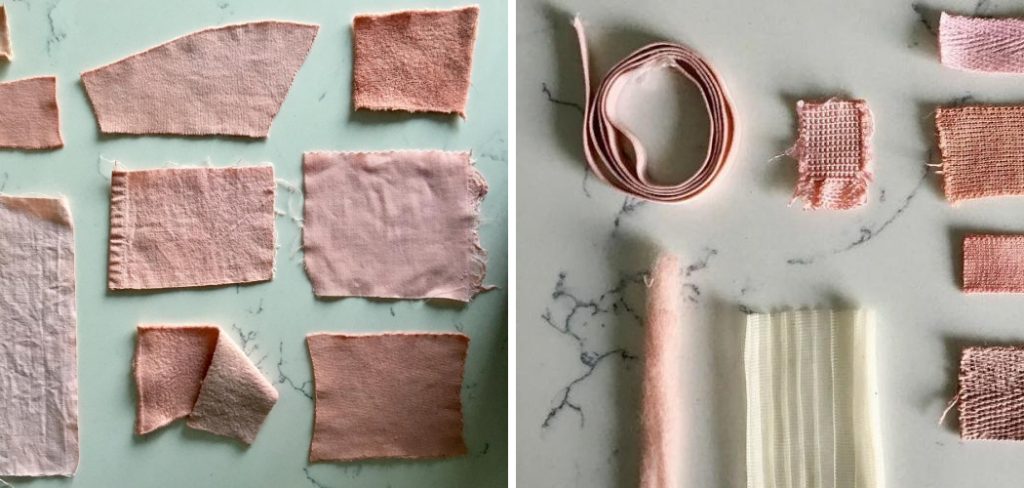
This sustainable dyeing method not only produces stunning results but also promotes resourcefulness and reduces environmental impact. Whether you’re a seasoned crafter or a novice dyer, learning how to dye with avocado pits is a rewarding and creative process.
In this article, we’ll explore the step-by-step process of extracting pigment from avocado pits, preparing fabric or yarn for dyeing, and achieving vibrant and long-lasting colors. With just a few simple ingredients and a bit of patience, you can transform everyday materials into unique and beautiful works of art using the natural dyeing power of avocado pits.
The Resurgence of Natural Dyeing Methods
In recent years, there has been a notable resurgence of interest in natural dyeing methods. This revival is driven by a growing awareness of environmental issues and a shift towards sustainable and eco-friendly practices in art, fashion, and design.
Unlike synthetic dyes, which often contain harmful chemicals and produce toxic waste, natural dyes are sourced from the environment, making them a more environmentally responsible choice. Ingredients such as plants, fruits, vegetables, and minerals are used to create a wide spectrum of shades, each with its unique charm and variability.
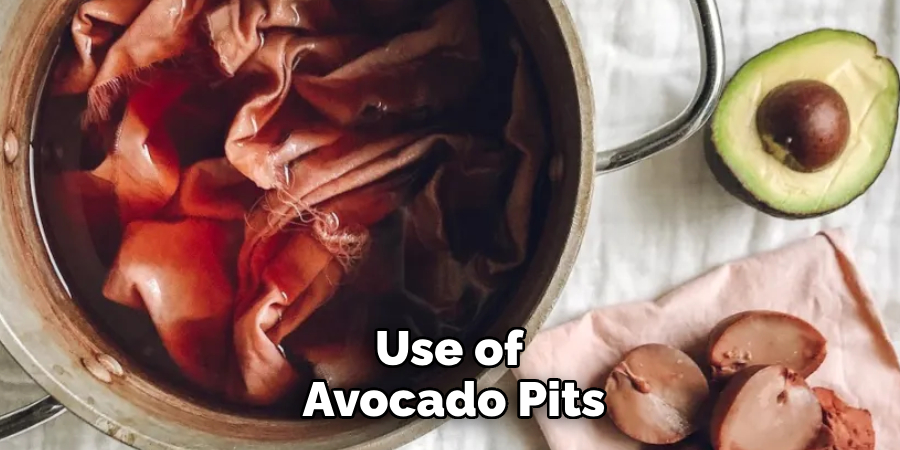
This movement towards natural dyeing not only helps in reducing the carbon footprint but also reconnects crafters with traditional techniques that have been passed down through generations. The use of avocado pits in dyeing is a perfect example of how everyday items can be repurposed into something extraordinary, highlighting the innovative spirit of this sustainable craft revival.
The Sustainable and Eco-Friendly Aspects
The sustainable and eco-friendly aspects of dyeing with avocado pits cannot be overstated. This method exemplifies a zero-waste philosophy by utilizing a byproduct that is typically discarded.
In a world grappling with the repercussions of unsustainable practices, adopting such eco-conscious techniques plays a pivotal role in environmental preservation. Not only does this method divert waste from landfills, but it also negates the need for synthetic dyes, which are notorious for their water pollution and hazardous chemical use.
Furthermore, avocado pit dyeing requires minimal energy, especially when compared to the production and disposal of conventional dyes. This approach to dyeing not only fosters a deeper appreciation for the resources provided by nature but also challenges individuals to rethink their consumer habits, promoting a more thoughtful and responsible interaction with our planet.
Properties of Avocado Pits
Avocado pits, the hard, stone-like centers of avocados, are more than just a byproduct of enjoying this versatile fruit. Rich in tannins, these pits possess a natural dye property that yields an array of pink and peach tones when used in fabric and fiber dyeing. The specific hue obtained can vary depending on several factors, including the amount of time the material is left in the dye bath, the pH level of the water, and even the type of avocado pit used.
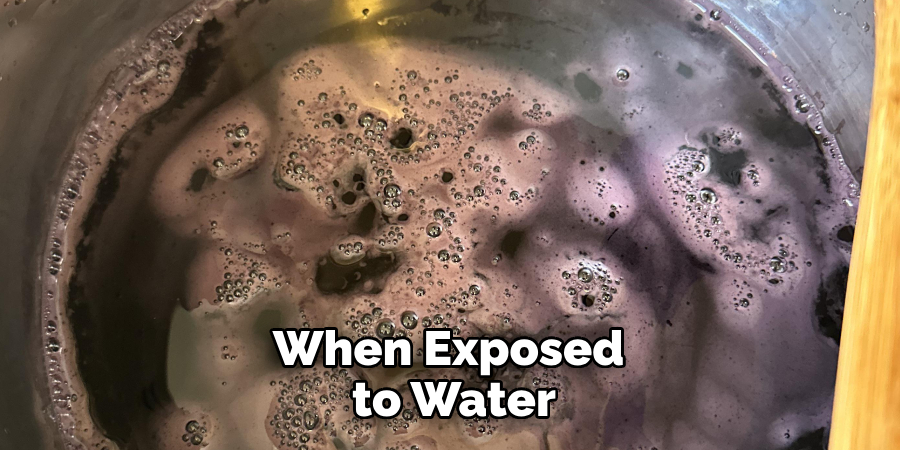
Remarkably, the intensity of the color can also be influenced by the number of pits in the dye bath, showcasing the pits’ potent pigmentation capabilities. Avocado pits contain a chemical compound called person, which, when exposed to water, undergoes a chemical transformation that releases a beautiful range of colors.
This unique property not only makes avocado pits an excellent source for natural dye but also positions them as a sustainable alternative to synthetic dyes, highlighting their significance in eco-friendly crafting and dyeing practices.
Benefits of Using Natural Dyes
The benefits of using natural dyes, such as those derived from avocado pits, extend far beyond their minimal environmental impact. Firstly, natural dyes offer a safer alternative for both artisans and consumers. Synthetic dyes often contain harmful chemicals that can cause skin irritations and other health issues.
In contrast, natural dyes, with their organic origins, are generally non-toxic and gentle on the skin, making them especially suitable for dyeing items intended for sensitive skin, such as baby clothing and bedding.
Secondly, natural dyes contribute to a sustainable lifestyle. By utilizing resources that are readily available and renewable, such as avocado pits, crafters can reduce waste and lower their carbon footprint. This not only helps in conserving the planet but also promotes a circular economy where every material is valued and nothing is wasted.
Furthermore, natural dyeing invites creativity and experimentation. Each dyeing process is unique, influenced by factors such as the local water composition, the specific dye source, and the technique used.
This variability ensures that every dyed piece is one-of-a-kind, with subtle nuances in color and pattern that cannot be replicated by synthetic dyes. This aspect of natural dyeing celebrates the beauty of imperfection and the personal touch of the artisan.
Lastly, engaging in natural dyeing practices reconnects individuals with historical and cultural traditions. Many cultures around the world have a rich history of using natural dyes, and by adopting these methods, crafters pay homage to this heritage and ensure its continuation for future generations. This deepens the cultural significance of the craft and enriches the crafting experience.
Preparing Avocado Pits for Dyeing
Preparing avocado pits for the dyeing process is straightforward but requires patience and attention to detail. The preparation begins with the collection of avocado pits, which can be saved from avocados consumed at home or sourced from local cafes and restaurants that otherwise would discard them.
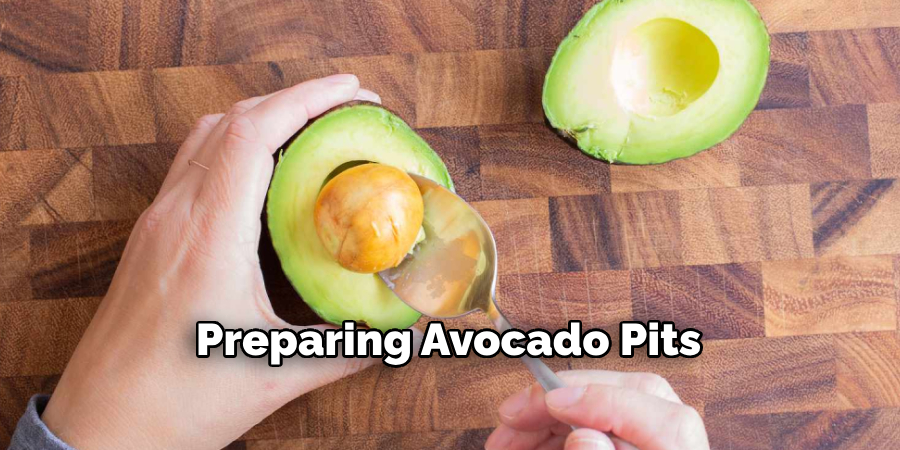
Once collected, the pits need to be cleaned thoroughly to remove any remaining avocado flesh, as this could affect the quality of the dye. After cleaning, the pits are left to dry; they can either be air-dried for a few days or oven-dried at a low temperature to speed up the process. It’s important to note that the pits will start to oxidize and turn brown once exposed to air, which is a natural process and does not impact their dyeing capabilities.
Once dried, the pits are ready to be used for dyeing. They can be used whole, crushed into smaller pieces to expose more surface area, or even finely ground into a powder for a more concentrated dye. The decision on how to process the pits depends on the desired intensity of the dye and the specific project requirements.
Crushing or grinding the pits not only releases more color but also speeds up the dye extraction process. With the pits prepared, the next step involves simmering them in water to extract the dye, a magical process that transforms the clear water into shades of pink and peach, ready to imbue textiles with natural color.
10 Methods How to Dye with Avocado Pits
1. Gather Avocado Pits:
To start dyeing with avocado pits, you’ll need to collect a sufficient number of pits. Save pits from the avocados you use in your meals by rinsing them clean and allowing them to dry. You’ll need approximately 6-8 pits per pound of fabric or yarn for a medium shade of dye. If you want a darker or more intense shade, you may need to collect more pits.
Once you have enough pits, you can either start the dyeing process immediately or store them for later use. To store avocado pits, place them in an airtight container or bag and keep them in a cool, dry place. They should last for several months without losing their potency.
2. Remove the Skin and Pulp:
Once you’ve collected enough avocado pits, remove the skin and any remaining pulp. You can do this by using a knife to carefully cut away the skin and scoop out the pulp. Rinse the pits thoroughly to remove any remaining flesh.
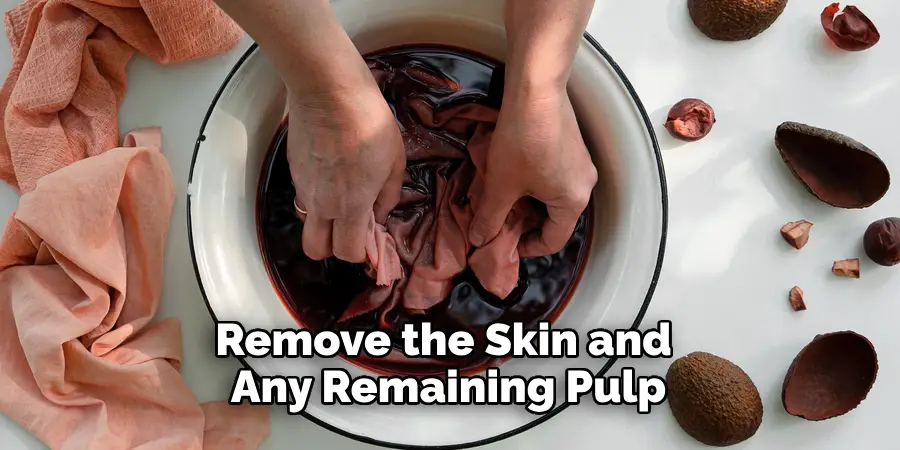
Now that you have removed the skin and pulp from your avocado pits, it’s important to properly clean them before using them for planting. This step is essential in order to prevent any potential diseases or mold growth on the pits.
To clean the pits, you can soak them in a mixture of water and mild soap for a few minutes. Then, rinse them off with clean water and pat them dry with a paper towel. Make sure to handle the pits carefully to avoid any damage.
3. Break the Pits into Smaller Pieces:
To extract the dye from the avocado pits, it’s helpful to break them into smaller pieces. You can use a hammer or mallet to gently tap the pits and break them into smaller chunks. Alternatively, you can use a sharp knife to cut the pits into smaller pieces. This will make it easier to grind them into a fine powder.
By breaking the pits into smaller pieces, you are increasing the surface area of the pit, which allows for more efficient extraction of the dye. It also helps to release more of the natural oils and pigments from within the pit.
4. Simmer the Avocado Pits:
Place the broken avocado pit pieces into a large pot and cover them with water. Bring the water to a simmer over medium heat and let the pits simmer for 1-2 hours. This will help release the natural pigments and tannins from the pits, creating the dye solution. Stir occasionally to make sure the pits are evenly submerged in the water.
Once finished simmering, turn off the heat and let the dye solution cool for 30 minutes. Then strain out the avocado pit pieces using a fine-mesh sieve or cheesecloth. You should be left with a deep red-brown colored liquid.
5. Strain the Dye Solution:
After simmering the avocado pits, strain the dye solution to remove any solid pieces. Use a fine mesh sieve or cheesecloth to strain the liquid into a clean container. Discard the solids, as they have already released their dye. While straining, be careful not to spill the dye solution, as it can stain surfaces and clothing.
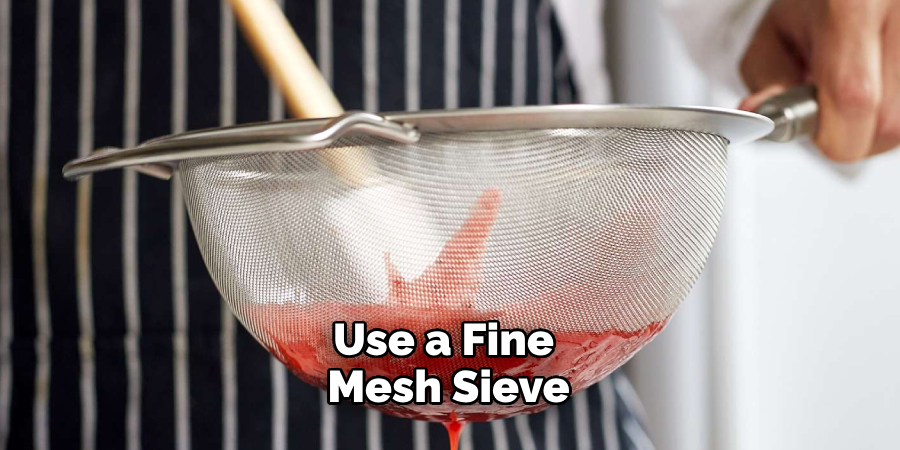
6. Prepare Your Fabric or Yarn:
While the dye solution is simmering, prepare your fabric or yarn for dyeing. Pre-wash the material to remove any dirt, oils, or residues that may interfere with the dyeing process.
If you’re using protein-based fibers like wool or silk, you can also pre-soak them in a mordant solution to help the dye adhere better. Mordants are substances that create a chemical bond between the dye and the fiber, resulting in more vibrant colors and better colorfastness.
To pre-wash your fabric or yarn, fill a sink or bucket with warm water and add a small amount of mild detergent. Submerge the material completely and gently agitate it for a few minutes to remove any dirt or residues. Rinse the material thoroughly with cool water until the water runs clear. You can also wash your fabric or yarn in a washing machine, using the gentle cycle and cold water.
7. Mordant Your Material:
Mordants are substances that help fix the dye to the material and improve colorfastness. While avocado pits contain some natural tannins that act as mordants, you can enhance the dyeing process by using additional mordants such as alum, iron, or copper.
Prepare a mordant bath according to the instructions provided with the mordant you’re using and soak your material in the bath for several hours or overnight. After removing it from the mordant bath, rinse the material thoroughly and let it air dry before dyeing.
8. Dye Your Material:
Once your dye solution is strained and your material is prepared, it’s time to dye! Fill a large pot with enough water to cover the material completely and bring it to a simmer. Add the strained avocado pit dye solution to the pot and stir to distribute the dye evenly. Place your material in the dye bath and simmer it for 1-2 hours, stirring occasionally to ensure even dyeing. The longer you simmer, the darker and more vibrant the color will be.

While your material is simmering, prepare a mordant solution to help set the dye. Mordants are substances that help bind the dye to the fabric fibers. Commonly used mordants include alum, iron, and tannic acid. Dissolve your chosen mordant in hot water and add it to the dye bath after 30 minutes of simmering. Continue to simmer for another hour, then turn off the heat and let the material sit in the dye bath until it cools.
9. Rinse and Wash Your Material:
After dyeing, remove your material from the dye bath and rinse it thoroughly with cool water to remove any excess dye. Then, wash the material with a mild detergent to remove any remaining dye particles and mordant residues.
Allow the material to air dry completely before using or wearing it. While washing, be sure to follow the care instructions for your specific material type, as some fabrics may require special handling. Though it may be tempting to use hot water or bleach to remove excess dye, this can actually damage the fibers and dull the color.
10. Experiment and Adjust:
Dyeing with avocado pits is an experimental process, and the results can vary depending on factors such as the concentration of dye, the type of material used, and the presence of mordants. Don’t be afraid to experiment with different dye concentrations, dyeing times, and mordant combinations to achieve the desired color and effect. Keep detailed notes of your dyeing process so you can replicate successful results in the future.
You can also adjust the color of your avocado pit dye by adding other natural dyes, such as turmeric or indigo. This can create unique shades and tones in your final product. Additionally, try using different types of fabric and fibers to see how they absorb the dye differently. Some fabrics may result in more vibrant colors while others may produce more muted tones.
Sustainable and Eco-Friendly Benefits
Utilizing avocado pits for dyeing fabric is not only an innovative way to achieve a unique palette but also promotes sustainability and eco-friendliness. By repurposing what would otherwise be waste, this method minimizes environmental impact and contributes to a more sustainable fashion industry.
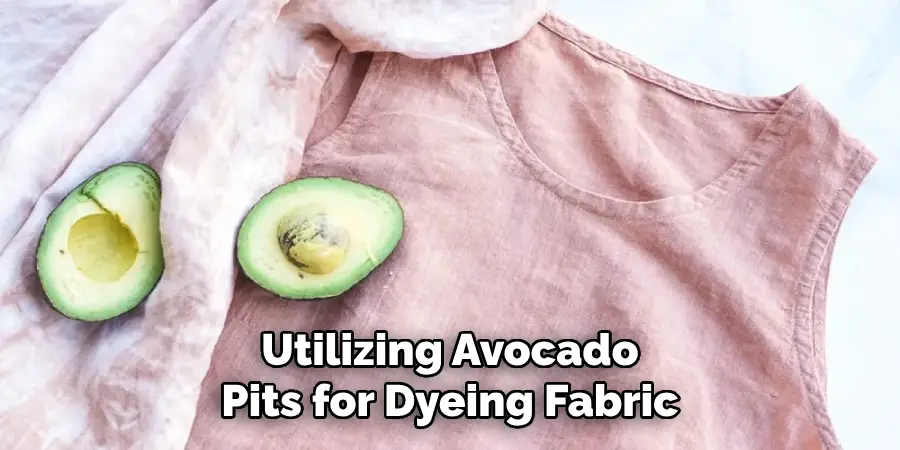
Natural dyes, including those derived from avocado pits, are biodegradable and less harmful to water sources compared to synthetic dyes, which often contain toxic chemicals. Adopting natural dyeing practices aligns with eco-conscious living and supports the global movement towards reducing pollution and preserving our planet’s health for future generations.
Conclusion
In conclusion, delving into the art of dyeing with avocado pits offers a delightful fusion of creativity and sustainability in the realm of natural dyeing. Harnessing the vibrant hues derived from avocado pits not only yields beautiful results but also reflects a commitment to eco-conscious practices by repurposing food waste.
Through understanding the dye extraction process, experimenting with different dyeing techniques, and embracing the unpredictability of natural dyes, crafters can breathe new life into fabrics and fibers with unique shades of pink and peach.
Beyond the aesthetic appeal, dyeing with avocado pits fosters a deeper connection to nature and a sense of mindfulness towards resourcefulness and environmental stewardship. Thanks for reading, and we hope this has given you some inspiration on how to dye with avocado pits!
About the Author
Adrien Rowe, an expert in knitting, fiber arts, and bookbinding, promotes sustainability and creativity through workshops and tutorials. Passionate about education and community, he inspires crafters of all levels to learn, share, and grow in a supportive, idea-driven environment.
Professional Focus
Specializes in advanced knitting techniques, fiber manipulation, and textile innovation.
Expert in book arts, including cotton papermaking, handmade paper techniques, and bookbinding.
Dedicated to educating and inspiring crafters of all skill levels through tutorials, workshops, and hands-on learning experiences.
Passionate about creating a supportive community where makers can share ideas, learn, and grow.
Education History
Rhode Island School of Design (RISD) – Bachelor of Fine Arts (BFA) in Textiles.
University of Iowa Center for the Book – Master of Fine Arts (MFA) in Book Arts.
Expertise:
Advanced knitting, fiber manipulation, papermaking, bookbinding, sustainability-focused crafting, educational workshops, creative tutorials, and fostering a supportive maker community.
